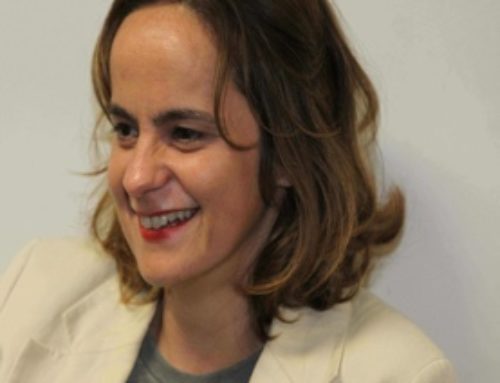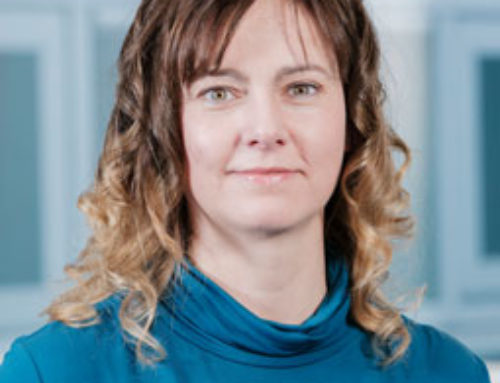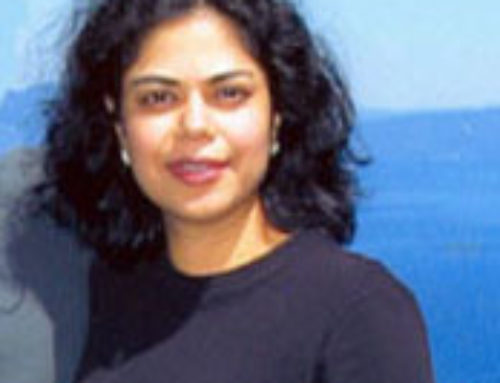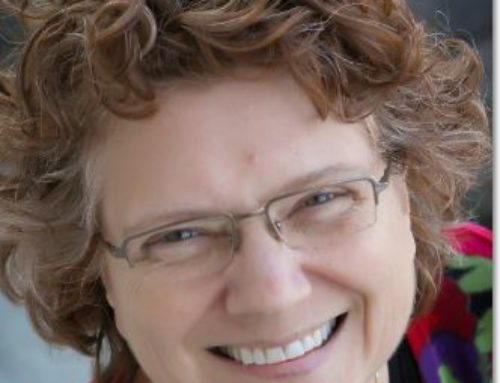HETL Note: We are pleased to present the first conference report to be published in the International HETL review – prepared by Dr. Laura Border and Dr. Taimi Olsen who participated in the biannual NAIRTL Threshold Conference at Trinity College in Dublin, Ireland and also served as HETL Liaisons at the conference. In their report the authors summarize and briefly discuss the key points made by the distinguished conference presenters. The reader is able to gain an insight in how the conference worked and familiarize themselves with a number of viewpoints and new ideas. The authors suggest that the framework at the center of the conference (i.e., the threshold concept model) offers possibilities and options that can be explored further when the model is applied in a local context.
Bios: Laura L. B. Border, Ph.D., directs the Graduate Teacher Program at the University of Colorado Boulder. She edits Studies in Graduate and Professional Student Development with New Forums Press, served as President of the Professional & Organizational Development (POD) Network from 2002-2004, and serves as the CU Boulder Campus Leader for the National Center for the Integration of Research Teaching and Learning (CIRTL). Dr. Border also sits on the editorial board of the International Higher Education Teaching & Learning (HETL) Association.
Taimi Olsen, Ph. D. is the associate director of the Tennessee Teaching and Learning Center at the University of Tennessee where she oversees the Center’s programs and directs several institutes and workshops on course design, visual learning, and group work in flexible classrooms. She currently serves on the UT Learning Consortium and is involved in research projects concerning the use of NSSE scores, the implementation of flexible classrooms, and a study of services for International Graduate Teaching Assistants. She has presented for several years at the Professional & Organizational Development (POD) Conference, and serves on the editorial board of the International Higher Education Teaching & Learning (HETL) Association. Her publications include disciplinary work in American Modernism. She is a member of the E. E. Cummings Society and frequent author to their journal.
Patrick Blessinger and Krassie Petrova
~~~~~~~~~~~~~~~~~~~~~~~~~~~~~
The NAIRTL Threshold Conference, Trinity College Dublin, Ireland, June 2012: A Conference Report
Laura L. B. Border and Taimi Olsen
University of Colorado Boulder, USA, and University of Tennessee, USA
In June 2012, Laura L. B. Border and Taimi Olsen served as HETL Liaisons at the Threshold Conference, held by the Irish National Academy for the Integration of Research, Teaching and Learning (NAIRTL) at Trinity College, Dublin (Ireland). The Academy dates from 2007 and promotes the investigation, practice, dissemination, and recognition of the linkage of research on teaching and learning with improved practice in Irish institutions of higher education.
 The Academy hosted the fourth biennial international conference on “Threshold Concepts” in tandem with their sixth annual NAIRTL Conference in June 27-29, 2012. More than 280 delegates represented 16 countries from four continents, including 26 Irish institutions and 112 others. Prior Threshold Concepts Conferences were held in the United Kingdom (Scotland), Canada, and Australia. The theme of this year’s conference was “Engaging Students with Threshold Concepts, Interdisciplinary Threshold Concepts, Threshold Concepts in Professional Development, and New Developments in Threshold Concepts.” Bettie Higgs (University College Cork, Ireland) chaired the conference committee, which included Vick Davies and Sarah Maguire (University of Ulster, UK), Ray Land (Durham University, UK), Erik Meyer (University of Queensland, Australia) and Catherine O’Mahony (NAIRTL, Ireland).
The Academy hosted the fourth biennial international conference on “Threshold Concepts” in tandem with their sixth annual NAIRTL Conference in June 27-29, 2012. More than 280 delegates represented 16 countries from four continents, including 26 Irish institutions and 112 others. Prior Threshold Concepts Conferences were held in the United Kingdom (Scotland), Canada, and Australia. The theme of this year’s conference was “Engaging Students with Threshold Concepts, Interdisciplinary Threshold Concepts, Threshold Concepts in Professional Development, and New Developments in Threshold Concepts.” Bettie Higgs (University College Cork, Ireland) chaired the conference committee, which included Vick Davies and Sarah Maguire (University of Ulster, UK), Ray Land (Durham University, UK), Erik Meyer (University of Queensland, Australia) and Catherine O’Mahony (NAIRTL, Ireland).
Brendan Hall, University of the Highlands and Islands, in Inverness, Scotland led a pre-conference workshop for newcomers on the historical background, definitions, and explanations of “threshold concepts.” To best understand the conversations at this conference, it is helpful to know the working definition of threshold concepts and its characteristics. In 2003, Ray Land and John Meyer introduced the threshold concept as one which is “troublesome” to students and has five characteristics: it is transformative (changing how a student views a concept), troublesome (in that it can be counter-intuitive), irreversible (once learned, it cannot be unlearned), integrative (bringing aspects of knowledge together) and bounded (in terms of disciplinary boundaries). They also suggested in following work that a threshold concept is discursive and recursive. The conference itself was structured around four keynote talks, a series of Pecha Kucha (a Japanese word for “chats” in which 6-7 speakers had about 6-7 minutes each to make a point, then opened the discussion up to questions), and concurrent sessions made up of series of presentations by different speakers.
Ray Land, co-editor with Jan Meyer and Jan Smith, of Threshold Concepts within the Disciplines, (2008) addressed the notion of the incorrigibility of the liminal state of learning in the first plenary session. Bettie Higgs, in the second plenary session, addressed troublesome concepts that students find hard to grasp, attributing some of the problem to students’ desire or lack of desire for action. In the third plenary session, Glynis Cousin (University of Wolverhampton, UK) focused on the need for faculty to shift attention to the relationship that exists between themselves and their students, and how the instructional duo shapes together what is taught and what is learned. In the fourth plenary, Patrick Carmichael (University of Stirling, UK) spoke about his experience working with research and development projects that integrate threshold concepts and troublesome knowledge. The plenary session talks can be viewed at the conference site.
In line with the conference theme, the concurrent sessions and Pecha Kucha sessions were organized around the following tracts: Engaging Students with Threshold Concepts; Interdisciplinary Threshold Concepts; Threshold Concepts in Professional Development (which encompassed both teacher education and faculty development in higher education); and New Developments in Threshold Concepts. Several themes that crossed multiple disciplines also emerged during the conference, such as the need for formative feedback from students in order to understand where they are struggling and why. This undercurrent was present in the keynotes but came out particularly in session presentations, in the juxtaposition of different disciplinary experiences.
Tony Ryan (Cork University Hospital, Ireland) presented a talk on, “Medical Student Reflections of Newborn Medicine,” giving an example of the use of student reflections, as he identified thresholds for learning under stressful situations (medical students watching doctors and nurses treat at-risk newborns). Anthony Ciccone’s (University of Wisconsin, Milwaukee) presentation, “Accepting Ambiguity, Enjoying Complexity: Threshold Concepts in the Humanities” emphasized differences between expert and novice. While humanities experts are comfortable applying critical analysis and literary theory—in his course, students are uncomfortable with such critiques concerning comedy. Ciccone used student reflections to show their progression as thinkers, as they were coaxed to analyze and evaluate texts.
A second observation, concerns the presenters’ use of various research methods. Student feedback, reflective statements, and interviews were used heavily, as with the two presenters already mentioned, and for some, the studies encompass multiple sections or courses. Lee Wertzler (Mount Royal University, Alberta, Canada) presented the “Self as Learner as a Threshold Concept” and described student experiences in “First Year Studies” courses that introduce Canadian students to the collegiate academic environment. She based her study primarily on structured interviews with students and argued that metacognitive awareness is a threshold concept with which undergraduates must grapple.
A third, related theme, addressed the patience, time, and willingness to work with and dialogue with students in a messy, liminal space. Several presenters, as well as speaker Patrick Carmichael (John Moores University, UK), remarked on the desire in some disciplines for students to stay in the liminal space (which is seen to encourage creative thought).
The conference demonstrated the existence of the potential for explicit comparisons and contrasts among disciplines to inquiry about threshold concepts. A more deliberate move to form research agendas and discussion of research methods would be helpful in bringing more cohesion to the variety of projects presented at the conference. It was difficult as a novice just learning about threshold concepts to hear individual presentations and understand whether there is yet any agreement in a particular disciplinary field about central threshold concepts. It will be exciting to see how this movement continues to grow, particularly given the level of energy and the quality of presentations.
The keynote talks were most helpful in that they provided broad perspectives that were theoretical, reflective, and speculative, and they are worth viewing online. Ray Land divided his talk between two topics: the spatial metaphor of liminality and the concept of ontology in liminality. First, he considered the potential usefulness of a variety of spatial metaphors as providing different understandings of liminal space. He considered what might better describe the student’s experience when confronted with difficult concepts, and the potential for transformation.
Land explained that change in a student’s thinking involves “oscillation” as students fluctuate between old and new knowledge. Language is important in this space, argued Land, because letting go of currently held concepts is difficult—as he said, you have to “let go of your prior experience.” In this situation, space can be a space of emergence since “rethinking” has “emergent properties.” Land proposed that “the learner encounters something new and tries to integrate it,” in which case that student will find that his or her former view is inadequate and will have to let go of it. He explained that for the student, all of your learning is part of the conception of yourself, and as you are joining a “community of practice,” you have to experience this “reworking” of yourself, a “re-authoring of self.” Thus, the metaphor of space should encapsulate this idea of oscillation.
Land pointed out that educators often use the trope of the “zone of proximal development,” a metaphor of space which implies that we need to get closer to expert status by crossing through a space. He queried the audience: Is it space or just relationship with someone else? For architects, Land explained, a curved line suggests possibilities whereas a closed line creates a threshold, a crossing out or in. Therefore, changing our metaphor changes our conversation. With a curved line, architects are more interested in connections. At this point, Land showed a slide of a London Underground transportation map and cited Beck (developer of the London underground system, 1931) who said that connection is more important than containment. In transformational space, there are degrees of connection, and the map shows points of connection. As educators, Land asked, how do we help students get from “here” to “there”?
The second half of Land’s talk dealt with aspects of conversations between teachers and students. Frequently, teachers transmit content through lecture, yet students will get stuck by threshold concepts. Part of the problem, Land explained, lies in the process of students adding new terms to their stock of concepts. Communication between professor and student, when new terms are introduced, can lead to difficulties. Land asked, “How does the teacher become aware” of these instances when students have trouble integrating new terms? Students need to engage and manipulate new knowledge—and the professor provides the framework. However, for the teacher, it may be difficult to figure out when students are in this state of struggle and when they need a clear framework, because “they may not want to reveal” what they don’t know. They may continue to use an earlier signifier, a term which means one thing to the student and something else to the teacher, a situation which disguises their lack of understanding.
Another problem, said Land, is that in order to integrate new knowledge, students need to understand aspects and terms sequentially, yet concepts are holistic. “In the end, hopefully” it all comes together when they have all the pieces. Until then, there is a time of “conceptual uncertainty.” He reached the end of this talk by asking the audience, what might help students acquire “threshold capital?” What disposition or affective aspect might help students acquire signifiers more readily?
Land may have begun his talk with a highly abstract consideration of spatial metaphors, yet he quickly moved into the area of student understanding and teacher-student connection and communicative relationships. In this regard, his talk melded nicely with the two shorter talks by Bettie Higgs and Glynis Cousin. All were addressing an emerging concern—the centrality of teacher-student interaction in the learning process. Higgs spoke about the affective domain of learning and examined why students would fall short of ‘crossing’ the threshold. She posited that students adopt coping mechanisms and do not fully communicate with their teachers, because they may face barriers in addition to threshold concepts in academic studies, such as difficulties in their own lives or problems internalizing university academic expectations.
Through her research, Higgs noted that students have a period of time where they are transitioning into readiness to address threshold concepts and that this space may be “messy” with confusion and questions (she notes that Cousin has previously suggested such as well). She noted that when students start asking questions, this is a sign that students are starting to work out concepts. Students need to start discovery of new concepts for themselves, but, Higgs argued, teachers can help this process. Rather than speeding up the transmission of content in an effort to get coverage and possibly ‘leapfrogging’ through complex concepts, teachers can pay attention to what students need to learn. They can also incorporate activities that invite students to work with and integrate new knowledge. The act of trying to put things together can cause students to raise questions. More importantly, students are developing skills in self-assessment, self-awareness, and self-direction—these are capacities that we can help students build, says Higgs.
Glynis Cousin, too, argued for a focus on the teacher-student relationship. In her discussion of her various educational research projects, she exhorted the audience to be neither teacher- centered nor student-centered but to center on the relationship. In one example, she discussed teaching a study skills module meant to introduce first year students to academic practice. She explained that she was working with a phenomenon she explained as what is happening “in the wings” for the students. The students who aren’t engaged, she noted, “don’t accept the exchange relationship” that is necessary for themselves as university students. Reciprocity between student and teacher is key to their learning, she stated. One of her students said that “you have to learn to feel like a student” at university and recognize that you have relationships with teachers. Cousin asked the audience, how do we typify the student-teacher relationship? As educators, she said, we think in terms of being either student-centered or teacher-centered. Cousin argued that we need “to restore relationship to centrality.”
The conference ended with a talk by Patrick Carmichael, who began with an overview of the conference topics, then focused on curriculum development in the context of threshold concepts. Following Cousin’s talk, it was not difficult to see the influence of Cousin on Carmichael and the similarities of their thinking, since Cousin has written about threshold concepts and curricular design (2006). Cousin laid out principles of design, including “listening with understanding” to the student and “tolerating the confusion” which students exhibit as they learn a troublesome concept. Given this ongoing conversation about teacher-student relationships and communication, Carmichael brings us appropriately to the level of the decisions we make in delivering a course of study.
In the first half of his talk, Carmichael addressed common assumptions among educators that our curriculum is well-understood and that what we are doing when we examine threshold concepts is just a mapping of “our existing practice” and a subsequent directing of students’ attention to these concepts. In one professional development project, Carmichael and his colleagues asked teachers to identify areas of conceptual difficulty. Then, the teacher would explain a concept not as a lecture but as if a student had come to the office having trouble with a concept and seeking help. These “talks” were video-taped and posted online, along with any drawings and other artifacts produced by the teacher during the explanation. All were seen as highly useful by both students and teachers (who appreciated not having to make explanations repeatedly).
However, Carmichael noted, in this early project, the teacher’s thinking was about “mapping existing territory”—with the assumption that the curriculum is understood and that all that is needed is to look within understood curriculum. In further work with this “mapping out” exercise, he discovered that teachers and students in engineering had “radically different ideas” about what was troublesome knowledge. Hence, Carmichael pointed out, there was a need for more dialogue between teachers and students. Carmichael walked the audience through several more examples and reached the following conclusion: none of his examples matched the five characteristics of threshold concepts. Rather, one discipline addressed a network of concepts, another addressed pedagogical strategy linked with underpinning concepts, a third, boundary crossing and engagement strategy, and a fourth concerned critical engagement leading to different space.
 In short, he challenged the straight-forward conceptualization of uncovering disciplinary threshold concepts by presenting the audience with counter examples. Given the complexity of complex concepts in disciplinary studies, it is perhaps not surprising that not all disciplines fit into neat categories of learning. In some disciplines, concepts are elaborately networked, in others, teachers push to teach students critical, foundational concepts, in others, teachers and students move into liminal space—the space of questioning and creativity—and simply stay there, rather than ‘crossing’ the threshold. Yet underlying this variety of cognitive processes are a common element—the interaction of teacher and student in the learning process. Communication, relationship-building, attentiveness, and engagement with the subject matter were—it was argued by each speaker—at the core of a student’s struggle with difficult knowledge.
In short, he challenged the straight-forward conceptualization of uncovering disciplinary threshold concepts by presenting the audience with counter examples. Given the complexity of complex concepts in disciplinary studies, it is perhaps not surprising that not all disciplines fit into neat categories of learning. In some disciplines, concepts are elaborately networked, in others, teachers push to teach students critical, foundational concepts, in others, teachers and students move into liminal space—the space of questioning and creativity—and simply stay there, rather than ‘crossing’ the threshold. Yet underlying this variety of cognitive processes are a common element—the interaction of teacher and student in the learning process. Communication, relationship-building, attentiveness, and engagement with the subject matter were—it was argued by each speaker—at the core of a student’s struggle with difficult knowledge.
To conclude briefly, both Olsen and Border report that the threshold concept model was intriguing, the quality of the talks engaging, and that both intend to use threshold concepts at their home institutions. Border is integrating the threshold concepts model into a new project at the University of Colorado Boulder, and Olsen is weighing the impact of the model and possible new practices at the Tennessee Teaching and Learning Center. The next biannual Threshold Conference will take place in 2014 at the University of Durham in the United Kingdom.
Suggested Citation:
Border, L. & Olsen, T. (2012). The NAIRTL Threshold Conference, Trinity College Dublin, Ireland, June 2012: A Conference Report. The International HETL Review. Volume 2, Article 10, https://www.hetl.org/conference-report-articles/2012-nairtl-threshold-conference-report
Copyright © [2012] Laura Border & Taimi Olsen
The author(s) assert their right to be named as the sole author(s) of this article and the right to be granted copyright privileges related to the article without infringing on any third-party rights including copyright. The author(s) retain their intellectual property rights related to the article. The author(s) assign to HETL Portal and to educational non-profit institutions a non-exclusive license to use this article for personal use and in courses of instruction provided that the article is used in full and this copyright statement is reproduced. The author(s) also grant a non-exclusive license to HETL Portal to publish this article in full on the World Wide Web (prime sites and mirrors) and in electronic and/or printed form within the HETL Review. Any other usage is prohibited without the express permission of the author(s).
Disclaimer
Opinions expressed in this article are those of the author, and as such do not necessarily represent the position(s) of other professionals or any institutions.





